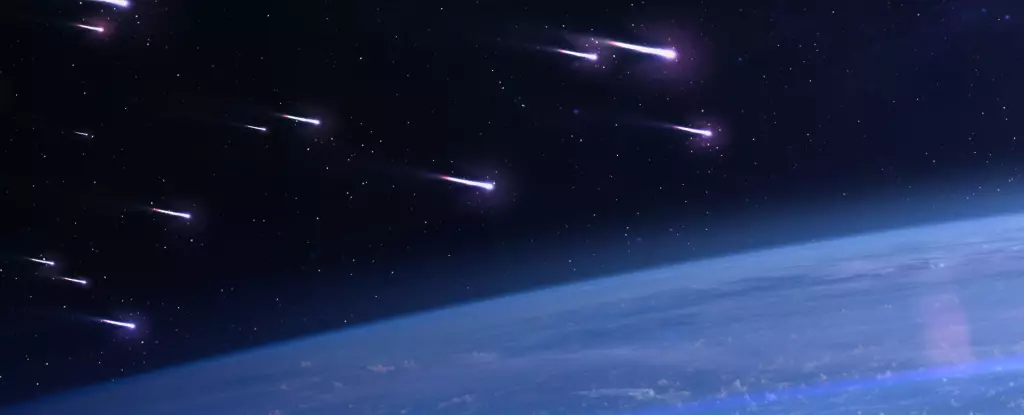Each year, the heavens offer an astounding spectacle that garners attention from enthusiasts and casual viewers alike: the Leonid meteor shower. This astronomical event, traditionally hitting its peak in mid-November, has remarkable significance not only for its beauty but also for its history and the excitement it generates among stargazers. One might wonder why there’s a sense of heightened anticipation surrounding the Leonids in particular. This year’s display carries with it a blend of nostalgia and potential for surprises, reminiscent of notable past occurrences, such as the mesmerizing meteor storm of 1998, a memory seared into the minds of those fortunate enough to witness its grandeur.
While many enjoy the visual feast provided by stars streaking across the night sky, the Leonids are unique due to their intrinsic link with the periodic comet 55P/Tempel-Tuttle, which sweeps through the inner solar system approximately every 33 years. This comet is not just the source of the meteor shower; it provides insight into the mechanics of cosmic phenomena and helps astronomers better understand the dynamic nature of our solar neighborhood.
Looking ahead to November 2024, interest swells even as astronomers herald it as a year that’s ‘off’ in terms of significant meteoric activity. Although expected rates are modest—projected to hover around 15 to 20 meteors per hour—the potential for unexpected finds exists. The true intrigue, however, lies in the unusual forecast of earlier encounters with remnants from past meteor showers. According to Jérémie Vaubaillon of the Paris Observatory, the Earth may interact with three ancient streams laid down by the comet’s trajectory over the last few centuries, creating a fascinating scenario for meteor watchers.
These earlier streams, particularly those dating back to 1633 and 1733, hold whispers of historic meteor storms. November 14 seems to be a critical date, with an anticipated zenith near the time of dusk UTC. Each period poses a unique viewing opportunity, with sites in North America and Asia being particularly well-positioned to catch the celestial display. However, the waning moon this week casts a shadow over predictions for visibility and could thwart the best-laid plans of aspiring observers.
For those hoping to participate in this astronomical event, early mornings remain the prime time for observation. During this period, Earth finds itself moving headlong into meteoric debris, giving viewers an unimpeded view of the sky as they scan for trails of light. Meteors seem to emanate from the shower’s radiant point, making it essential to understand how to effectively position oneself for optimal viewing.
Using technology aids, such as a DSLR camera with an intervalometer, can enhance the experience. Setting up your camera to take successive auto-exposures allows for capturing groupings of meteors over a prolonged period. The thrill of the chase—watching as streaks of light pass overhead while nestled in the comfort of a warm drink—promises an enthralling night under the stars.
While the 2024 meteor shower threatens to be sedate, it serves as a precursor for what could be in the coming years, particularly the return of more significant displays expected in 2025 and 2030. Meteor storms occur when ZHR (Zenithal Hourly Rate) numbers soar to extraordinary heights, turning a simple viewing into a breathtaking phenomenon. Historical accounts of Leonid storms, particularly those from 1966, when observers noted rates of 150,000 meteors per hour, provide context to the excitement that accompanies each cycle of these celestial visitors.
In the world of celestial phenomena, the Leonids hold a special place. While their impressive peaks may not always coincide with yearly observations, the intrinsic nature of astronomy encourages us to marvel at each event, no matter how grand or modest in promise.
As we await the arrival of this year’s Leonids, taking the time to prepare and educate ourselves about the nature of these magnificent meteor showers nurtures a deeper appreciation for our universe. Stargazers, whether seasoned veterans or curious novices, must be reminded that each meteor shower carries with it the possibility of a delightful surprise.
So as November 14 approaches, let enthusiasm reign, and keep your eyes on the sky. For it is within these moments of anticipation that we might just catch a glimpse of the unexpected. Who knows what wonders may unfold in front of us? The cosmic stage is set; all we have to do is observe.

